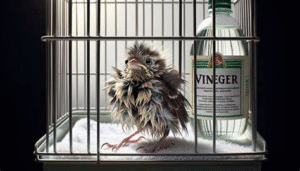As a dog owner, your top priority is the health and well-being of your furry companion. One of the most critical steps you can take to protect them from life-threatening illnesses is adhering to a proper vaccination schedule. At the heart of this schedule is the 5-in-1 vaccine, commonly known as the DHPP shot. This single injection provides powerful protection against five serious and highly contagious diseases that can devastate a dog’s health, particularly in their puppy years.
Understanding what this vaccine protects against, when it should be administered, and what to expect is fundamental to responsible pet ownership. This comprehensive guide will walk you through everything you need to know about the 5-in-1 vaccine, empowering you to work with your veterinarian to give your dog the best possible start in life and maintain their immunity for years to come.
🧬 What’s Inside the 5-in-1 (DHPP) Vaccine?
The 5-in-1 vaccine is considered a “core” vaccine by veterinary experts, meaning it is recommended for every single dog, regardless of their lifestyle or location, due to the universal risk and severity of the diseases it prevents. The acronym DHPP represents the four primary pathogens it targets.
- D is for Canine Distemper: This is a severe and often fatal viral disease that attacks a dog’s respiratory, gastrointestinal, and nervous systems. Symptoms can range from fever and coughing to seizures and paralysis.
- H is for Hepatitis (Adenovirus): The “H” actually stands for hepatitis, which is caused by canine adenovirus type-1 (CAV-1). The vaccine contains a modified canine adenovirus type-2 (CAV-2), which provides effective cross-protection against both infectious canine hepatitis and respiratory disease. According to the AAHA, this approach offers robust immunity while reducing the potential for vaccine side effects.
- P is for Parvovirus: Canine parvovirus is a highly contagious and resilient virus that causes severe vomiting, bloody diarrhea, and life-threatening dehydration. It is particularly dangerous for puppies, with a high mortality rate if left untreated.
- P is for Parainfluenza: This is a respiratory virus and one of the common contributors to “kennel cough,” an infectious tracheobronchitis. While not typically as deadly as distemper or parvo, it can cause significant discomfort and lead to secondary infections.
Together, these components create a formidable shield, protecting your dog from some of the most widespread and dangerous canine illnesses.
🗓️ Veterinarian-Recommended Vaccination Schedule
Adhering to a proper vaccination schedule is crucial for establishing and maintaining your dog’s immunity. The timeline for the 5-in-1 vaccine is divided into two key phases: the initial puppy series and ongoing adult boosters. While this schedule serves as a standard guideline, your veterinarian will tailor a precise plan based on your dog’s specific age, health status, and lifestyle.
The Puppy Vaccination Series
Puppies receive initial, temporary immunity from their mother through maternal antibodies. However, these antibodies wane over the first few months of life and can interfere with a vaccine’s effectiveness if it’s given too early, as noted by the Merck Veterinary Manual. To overcome this, veterinarians administer a series of vaccinations to ensure the puppy builds its own robust, long-term protection.
The typical puppy series for the DHPP vaccine follows this schedule:
- First Dose: 6 to 8 weeks of age
- Subsequent Boosters: Every 2 to 4 weeks after the first dose
- Final Dose: At or after 16 weeks of age
According to the American Animal Hospital Association (AAHA) vaccination guidelines, this multi-shot protocol is critical. Completing the full series ensures that the puppy develops a strong immune response once maternal antibodies are no longer present. AAHA.
Adult Dog Booster Schedule
Once the initial puppy series is complete, periodic boosters are necessary to maintain immunity throughout your dog’s adult life.
- First Adult Booster: This is typically administered one year after the final puppy vaccination.
- Ongoing Boosters: Following the one-year booster, the American Veterinary Medical Association (AVMA) supports guidelines recommending revaccination for core diseases like distemper, parvovirus, and adenovirus no more frequently than every three years. This triennial schedule is effective at maintaining protection while minimizing the potential for adverse reactions associated with over-vaccination.
Your veterinarian will confirm the ideal booster frequency for your dog, considering factors like travel, boarding, and local disease prevalence. In some cases, a veterinarian may suggest an antibody titer test to measure a dog’s existing immunity levels before administering a booster.
⚠️ Understanding Potential Side Effects and Risks
Vaccines are one of the safest and most effective tools in veterinary medicine, but like any medical procedure, they carry a small risk of side effects. The vast majority of reactions are mild and short-lived, indicating that the vaccine is successfully stimulating the immune system. Being aware of what to watch for can help you provide supportive care and know when to contact your vet.
Common and mild side effects, which usually resolve within a day or two, include:
- Mild fever
- Lethargy or sluggishness
- Soreness or mild swelling at the injection site
- Temporary loss of appetite
The American Veterinary Medical Association advises that these reactions are generally not a cause for alarm. However, on rare occasions, a dog may experience a more serious allergic reaction. You should contact your veterinarian immediately if you observe any of the following signs:
- Persistent vomiting or diarrhea
- Itchy skin or hives
- Swelling of the face, muzzle, or eyes
- Difficulty breathing or severe coughing
- Collapse
These severe reactions are very uncommon but require immediate veterinary attention. To minimize risks, always inform your vet about any previous vaccine reactions your dog has had.
💰 Cost, Care, and Your Vet’s Role
The cost of the 5-in-1 vaccine can vary significantly based on your geographical location and the specific veterinary clinic. It’s important to remember that the fee typically covers more than just the shot itself. A critical component of the visit is the comprehensive physical examination performed by the veterinarian.
This exam is essential for several reasons:
- Assessing Health: A veterinarian ensures your dog is healthy enough to be vaccinated. Administering a vaccine to a sick animal may not produce a strong immune response and could worsen their condition.
- Early Disease Detection: The physical exam allows the vet to check for other underlying health issues, from dental disease to heart murmurs, promoting early intervention.
- Personalized Care: This is your opportunity to discuss your dog’s diet, behavior, and any other concerns you may have, leading to a tailored healthcare plan.
While there is an upfront cost, vaccination is one of the most cost-effective measures you can take. The expense of treating diseases like parvovirus or distemper can run into thousands of dollars, with no guarantee of a positive outcome. As the American Veterinary Medical Association emphasizes, preventative care through vaccination saves money, prevents suffering, and protects not only your dog but the wider canine community by reducing the spread of infectious disease.











